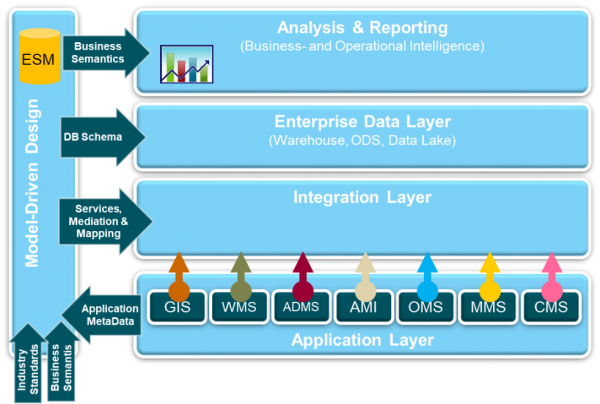Enterprise Analytics for Utility Distribution Planning
Electric distribution planning is a key part of any grid modernization program. Deep data analysis and analytics are instrumental to this initiative, offering holistic, actionable intelligence to fuel these forward-looking decisions.
With the right information architecture, utilities can get access to capabilities within their enterprise analytics platforms that create real-time insights for informed network planning:
- Transformer load percentage calculations based on time-series load profiles for distribution transformers. These are created by aggregating load from smart meters connected to the transformer.
- Load profiles using aggregated advanced metering infrastructure (AMI) data for distribution transformer substations, circuits and other strategic nodes in the distribution network.
- Peak transformer loading and peak transformer load percentage values, against nameplate rating, for the previous 12 months, which are made available for other applications to consume.
- Load, generation and voltage profiles created using a process for cleansing SCADA load and voltage profiles. Cleansed load profiles are developed from historical SCADA data, which use a cleansing algorithm to identify and correct data spikes, gaps, temporary load transfers and other anomalies.
- A severity index that models transformer type, sector, size and climate zone, flagging those exceeding certain standards for distribution design removal as ‘high severity,’ so teams can act quickly.
- A monthly profile creation process for cleansing SCADA load data to support distribution engineering forecasting and distributed energy resource (DER) interconnection. Forecast profiles within the analytics platform enable utilities to perform profile analysis, substation and circuit capacity analyses, duct bank analysis and more.
Jumpstarting the implementation process
The first step in integrating these new capabilities into an existing enterprise analytics platform is to articulate the functional requirements in a business architecture using ArchiMate notation. The third edition of the IEC 61968-1 Interface Reference Model (IRM) offers a way to jump start a utility’s business architecture and has the additional benefit of identifying industry standard interfaces.
The business architecture traces to its information architecture model, which then traces to all data-in-motion and data-at-rest artifacts. These artifacts are created using the same vocabulary from the utility’s enterprise semantic model (ESM), which is in unified modeling language (UML) notation. It is recommended that utilities leverage industry standards such as the IEC Common Information Model (CIM) to incrementally build their ESM in step with business needs. This standards-based approach reduces implementation and lifecycle costs, decreases vendor ‘lock-in,’ and ensures that data requirements are covered congruently from all operational and planning perspectives – even though each individual project considers only a small piece of the utility’s overall smart grid.
The diagram below is a visual representation of how the ESM is created and used.

Enterprise analytics administered through a data-as-a-service model is incredibly valuable because the approach helps utilities consolidate information from many sources, more seamlessly perform data transformation projects and quickly prepare datasets for consumption by business intelligence applications—all using the same vocabulary.
Smart data analysis and management leads to even smarter distribution planning decisions, which enable utilities to proactively prepare for an evolving, modern grid.
Want to learn more? Xtensible will be discussing this approach at the Xtensible booth and during a presentation in the “How Utilities are Using Advanced Data Analytics and Modeling Tools for Innovative Solutions,” session on Thursday morning (room 214A) at DistribuTECH 2020. We invite you to join us there for more details and interesting discussions.
Back To Blog



